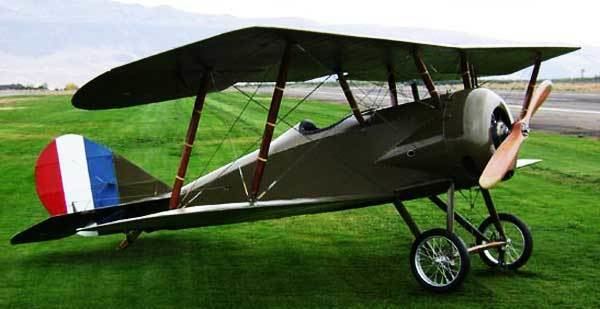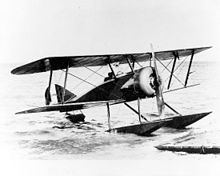Top speed 156 km/h Length 6.05 m | Wingspan 8.08 m | |
 | ||
The Thomas-Morse S-4 Scout was an American biplane advanced trainer, operated by the United States Army and the United States Navy. Dubbed the "Tommy" by pilots who flew it, the aircraft became the favorite single-seat training airplane produced in the U.S. during World War I. It had a long and varied career beginning with the S-4B, which first appeared in the summer of 1917.
Contents
- Design and development
- Operational history
- Operators
- Survivors
- Specifications S 4C late production
- References

Design and development

Built by Thomas-Morse Aircraft in Ithaca, New York in 1917, it was a compact single-seat open-cockpit biplane of equal span and a 100 hp (75 kW) Gnome rotary engine.

The S-4 was designed by Englishman Benjamin Douglas Thomas (no relation to the company owners), formerly with the Sopwith Aviation Company, who also assisted with the design of the Curtiss JN-4 Jenny. The S-4 made its maiden flight in June 1917 in the hands of Paul D. Wilson. Twelve planes went to the Navy.
Operational history

The S-4B, with a 110 hp Gnome, a span of 27’ (8.22 m), and length of 20’3” (6.17 m) proved more successful, with three prototypes followed by an order of 97 for the Army and 10 for the Navy, while six more were completed with two main and one tail floats as the Navy S-5. The S-4B was used by practically every pursuit flying school in the U.S. during 1918.

It was supplemented in 1918 by the S-4C, at a cost of US$5400 each. Six prototypes were built, and the 80 hp (60 kW) Gnome B-9 was replaced by the "more reliable" 80 hp (60 kW) Le Rhône 9C starting with the fifty-second production aircraft. 461 S-4Cs went to the Army and four S-4Cs with floats went to the Navy.

After World War I, many "Tommys" were sold as surplus to civilian flying schools, sportsman pilots, and ex-Army fliers. Many were still being used in the mid-1930s for World War I aviation movies, and several continue to exist in flying condition today.
A single aircraft was fitted with new tail and 110 hp (82 kW) Le Rhône, becoming the S-4E aerobatic trainer. It was not adopted by the military, and after being fitted with a 135 hp (101 kW) Aeromarine V8 engine, it became Basil Rowe‘s racer Space-Eater.
About sixty surplus aircraft survived in civil service, most of which were fitted with the Curtiss OX-5.
Operators
Survivors
Specifications (S-4C, late production)
Data from Aerofiles, United States Navy Aircraft since 1911,
General characteristics
Performance
Armament
